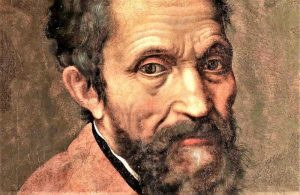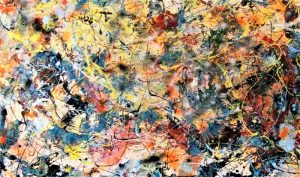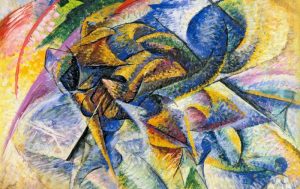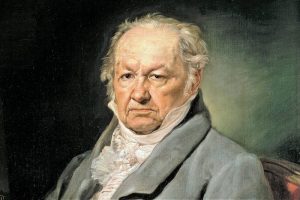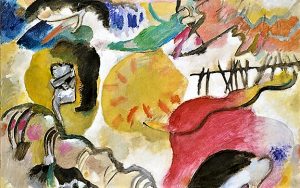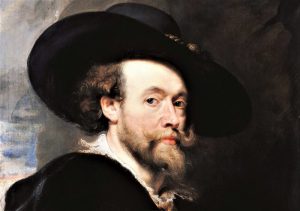Romanesque art
It is important to mention, before commenting about Romanesque art, that the Romanesque period was a complex movement involving art that emerged in Europe. It arose almost simultaneously in Spain, France and Italy. This movement came about as a result of the material prosperity that existed at the time and the spiritual renewal that emerged and had an enormous boom in the eleventh and thirteenth centuries. It was the art of the Middle Ages and the Feudal period. Its style was based on and adapted to a society without culture and controlled entirely by the church. It was one of the first styles of art and it was changing as they approached the Middle Ages. It tried to reflect the feudal society, the war and the Christianity and therefore, they performed in the creation of a great number of churches and religious buildings.
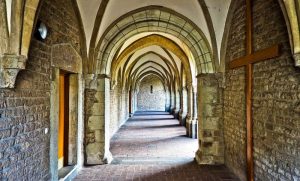
Related topics
Baroque art, Byzantine art, Egyptian art, Greek art, Medieval art, Rock art, Roman art
What is Romanesque art?
Romanesque art was an art style that predominated in Europe during the 11th and 11th centuries. With a Christian style, it was a genre that arose as a result of great material prosperity of the time and the renovation of the church that led to the elaboration of different buildings dedicated to religious life.
Romanesque art characteristics
It is very important to mention that architecture was the most important part related to Romanesque art. All the great sculptures and different paintings were not important for religion and their main destination was the temple. The sculptures and paintings were used to give a decorative type to the buildings of the era.
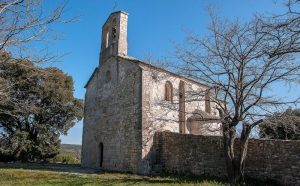 Romanesque art was an art focused on the rural, the countryside. It was not a very refined art. It always sought to draw lines, horizontal and vertical lines, it had a large number of arches, but elaborated in a very simple way. It was a completely geometric art, using in its creations very simple forms that looked to identify primitive and rural sensibility.
Romanesque art was an art focused on the rural, the countryside. It was not a very refined art. It always sought to draw lines, horizontal and vertical lines, it had a large number of arches, but elaborated in a very simple way. It was a completely geometric art, using in its creations very simple forms that looked to identify primitive and rural sensibility.
Artists of the time never built a church for pleasure or simply to adorn. Their primary objective was to exalt religion. The churches that were built were seen as an offering before God. They were considered as the human soul, the first thing that was seen was the great facade, and for this reason, it was one of the most important parts which should be seen better. Its interior was very simple and dark, thus representing the soul of the Christian. It was a way for them to give praise to God.
Romanesque style went hand in hand with nature as they were also based on rural themes and small churches. Romanesque architecture was owned by the monks and medieval science. They were the only ones who fully understood the facades and capitals. It was regarded as a pedagogical art that sought to educate people and to inculcate in them God’s fear and His message. It is for this reason that, in many of the architectural works facades, figures of mythological monsters and animals were very common to be found.
History of Romanesque art
If we are looking for a reference point to know when Romanesque art was born, then we must refer to the monastery of Cluny. It was founded thanks to the Aquitaine dam Guillermo a monastery and in that place was created the Cluniaciense reform, which was entirely dedicated to the adoration towards saints.
Architecture
The Romanesque architecture was dedicated to the church clergy, first because they were the only consumers, and second because they were the only ones who knew how to make it. The main monument of Romanesque architecture was the well-known Romanesque temple. Another of the great innovations made by the faithful was the bell tower, which was included in the temples of the churches. A variety of Romanesque temple is called cloister temple or monastery.
Romanesque art Sculpture
His figures had a great sense of spirituality and the anatomy was completely in second place. It was most important to place it at the entrance of temples. Its relief was always very flat and the scenes that surrounded it had no complication. With time, figures began to have more evolution.
Romanesque art painting
Full of intense contrasts, the drawing and colors retained all the artist’s attention. They drew thick black or red lines that gave shape to figures, the faces were painted red, especially the chin, cheek and forehead. In the center of the church vaults, they used to represent Christ in Majesty and sometimes the Virgin too. Some examples of Romanesque painting can be found in Catalonia, in the Tahull churches.
How to cite this article?
Briceño V., Gabriela. (2019). Romanesque art. Recovered on 4 January, 2025, de Euston96: https://www.euston96.com/en/romanesque-art/



